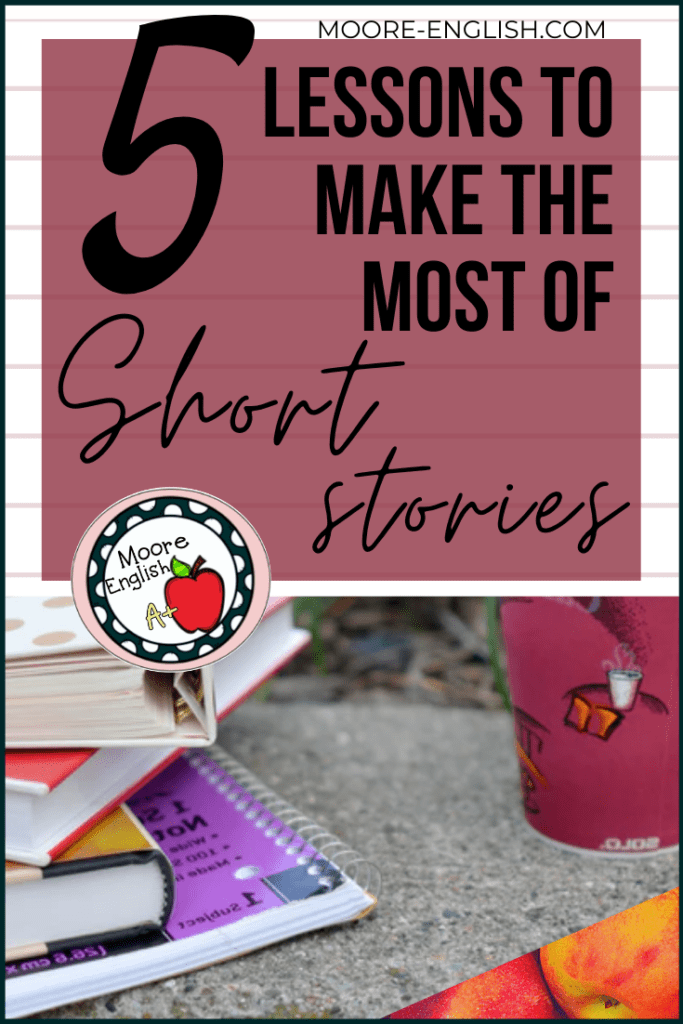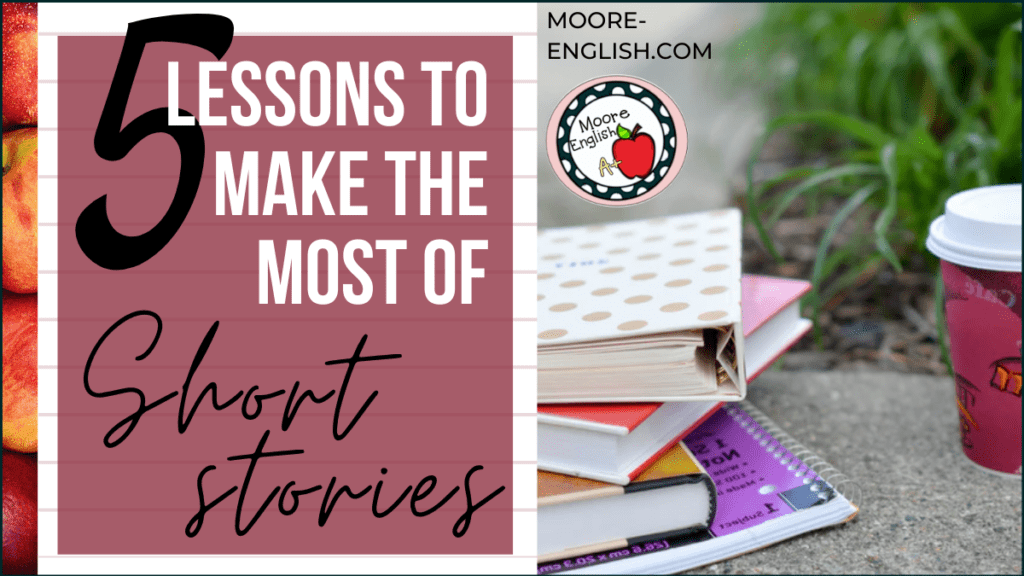The brevity of teaching short stories makes them great vehicles for focusing on specific skills. Some teachers use short stories at the start of the year. Others use them to complement individual units of study. However you choose to incorporate teaching short stories into your classroom, these are 5 lessons and skills to highlight with short stories!
This post this post may contain affiliate links. Please read the Terms of Use.
Plot Elements in Teaching Short Stories
Plot and Conflict
Because of their brevity, short stories often provide an opportunity to study plot and conflict. While students may be familiar with traditional plot structures, teaching short stories provide the opportunity to evaluate less familiar plot structures.
Similarly, short stories often include a variety of conflicts within a small space. For this reason, teaching short stories can be an opportunity to evaluate intersecting types of conflict. For example, “A White Heron” by Sarah Orne Jewett includes several types of conflict. At minimum, there’s person vs. self, person vs. person, person vs. technology, and person vs. nature all in one story.
Text Structure
Like plot structure, teaching short stories provides students with the opportunity to consider varying text structures. First, students encounter different text structures. Then, they become familiar with different elements of author’s craft. Next, students can then evaluate why an author uses a specific structure. How does the text structure support the author’s purpose? Here are some short stories with interesting text structures:
- “Girl” by Jamaica Kincaid is one long paragraph.
- “A Worn Path” by Eudora Welty makes use of deliberate ambiguity.
- “The Jilting of Granny Weatherall” employs stream of consciousness.
Characterization
Finally, characterization is key to making short stories compelling. In the brief space of a short story, a character must go through a complete character arc. The character development can help teachers emphasize theme and teach readers important lessons. For example, in “A New England Nun” by Mary E. Freeman, the main character’s development is crucial to the author’s purpose. On the other hand, the speaker in “Shooting an Elephant” by George Orwell makes less obvious character growth. His narration also provides insights into the relationship between point of view and theme.
Short Stories for Historical Context
In addition to story elements, teaching short stories can also be a good opportunity to evaluate a text’s historical context. Reading a series of short stories can provide insight into literary movements. A carefully planned progression of short stories can help students see how literary movements overlap, build on, and respond to one another. Here’s an example spiral:
- Firstly, “A White Heron” by Sarah Orne Jewett has strong Romantic elements.
- Secondly, “A New England Nun” by Mary E. Freeman exemplifies Regionalism.
- Thirdly, “The Yellow Wall-paper” by Charlotte Perkins Gilman represents literary modernism.
In addition to showcasing different literary movements, this curricular spiral also emphasizes different views of women in different historical contexts. Further, this collection also provides critical ground for evaluating women protagonists.
Literary Criticism in Teaching Short Stories
Finally, applying literary criticism is my favorite way to use short stories in the classroom. We’ve already seen how teaching short stories can lend itself to evaluating historical context. This is a great segue into historical criticism. Furthermore, one well-chosen short story can provide teachers with ground for introducing multiple critical lenses.
For example, “Winter Dreams” by F. Scott Fitzgerald lends itself to several critical lenses:
- Biographical: As with The Great Gatsby, elements of Fitzgerald’s life filter in to “Winter Dreams.”
- Historical: Reading “Winter Dreams” within its historical context provides insight into social class, gender roles, customs, and criticisms thereof.
- Feminist: Evaluating Judy Jones and Fitzgerald’s characterization of her is both fascinating and infuriating.
- Marxist: The setting and character motivations in the text provide commentary on capitalism and on the role of wealth as a corruptor.
All of these critical lenses appear in my “Winter Dreams” literary criticism pack, including a set of task cards. To find other texts ripe for literary criticism, consider these list of 40 texts for literary criticism.

Photo by Element5 Digital on Unsplash









